The following quotes are my primary references for understanding microtask queue processing:
Microtasks (which promises use) are processed when the JS stack empties.
That doesn't make sense to me.
One go-around of the event loop will have exactly one task being processed from the macrotask queue (this queue is simply called the task queue in the WHATWG specification). After this macrotask has finished, all available microtasks will be processed, namely within the same go-around cycle.
Now, regarding line 9 (**) in the following snippet:
From stepping through this snippet w/ debugger, the execution stack does not appear empty when these .then( callback ) microtasks are processed/executed.
Are regular functions like f2() considered a task (aka macrotask)? (when it returns it's an event loop nextTick() and the microtask queue is processed)
Why are microtasks executing when the JS stack is not empty?
function f2() {
let x = new Promise( (resolve, reject) => { resolve( () => {console.log('howdy')} ) })
return x
}
async function f1(){
let y = Promise.resolve().then(() => { console.log('yo1')})
console.log('yo2')
let r2awaited = await f2() //** 'yo0' and 'yo1' log when the interpreter hits this line.
return r2awaited
}
async function start(){
let y = Promise.resolve().then(() => { console.log('yo0')})
let xx = await f1()
console.log('main call return:')
console.log(xx)
}
start()Edit: Another peculiar finding - when you add xx() right after console.log(xx) on line 17, the stack is completely cleared prior to executing the microtasks.
The call stack 1 step prior to microtask queue processing:
Then the immediate next step.
Between these two steps, the microtask queue was processed.
Does the call stack clear [under the hood] between these steps^?
And then is a new call stack created according to the required lexical environment(s) for code after the await [expression]?
Edit: At the time of posting this, I was not aware that everything below the -----(async)----- line in the chrome debugger's call stack was part of a 'fake stack'.
This 'fake stack' is presented for async debugging in a way consistent with sync debugging.
Only the elements above this -----(async)----- line are part of the real main thread call stack.

